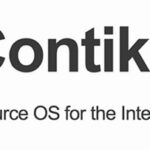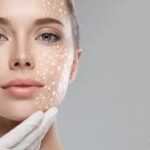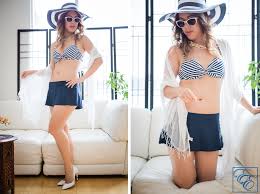In today’s fast-paced digital world, the beauty industry has become one of the most competitive and creative markets. Brands fight for consumer attention not only through product quality but through compelling visual storytelling. Among all marketing strategies, makeup ads hold a particularly powerful position. These advertisements shape beauty standards, influence purchasing decisions, and create emotional connections with audiences. Whether appearing on social media, TV, print, or billboards, makeup ads are a central force in shaping how beauty is perceived.
This article explores the evolution, psychology, strategies, and cultural impact of makeup ads, and why they remain essential to beauty branding.
The Evolution of Makeup Ads
Beauty advertising has transformed dramatically over the decades. Early makeup ads in the 1900s emphasized modest elegance, targeting women seeking improved confidence. By the 1950s and 60s, glamour and Hollywood icons dominated the aesthetic. The 80s brought bold colors and dramatic styles powered by pop culture trends.
Today’s makeup ads reflect diversity, inclusivity, and digital creativity. From influencer collaborations to viral TikTok trends, the landscape is more dynamic than ever.
Why Makeup Ads Are So Powerful
Makeup products are emotional purchases. Unlike many consumer goods, beauty products promise transformation, confidence, and self-expression. This emotional component makes makeup ads incredibly influential.
1. They Sell Confidence, Not Just Products
Effective makeup ads tap into the psychological desire to feel beautiful, capable, and glamorous. The message often goes beyond a simple foundation or lipstick—it conveys empowerment.
2. Visual Appeal Drives Sales
Makeup is inherently visual, making it perfect for eye-catching advertising. High-definition images, vibrant colors, and close-up shots of flawless skin instantly attract attention.
3. Social Proof and Influencers
Modern makeup ads frequently feature influencers and celebrities. Their endorsement provides credibility and encourages consumers to try the products themselves.
4. Emotional Storytelling
Brands like Dove, Fenty Beauty, and Maybelline create emotional narratives that celebrate individuality. These stories resonate deeply with audiences, strengthening brand loyalty.
Core Elements of Effective Makeup Ads
A successful makeup ad must combine creativity, strategy, and emotional connection. Here are the essential components.
1. Strong Visual Identity
Beauty ads rely heavily on visual impact. Colors, lighting, and textures are designed to highlight skin perfection, pigment intensity, and product performance.
2. Clear Messaging
The message must be simple, bold, and instantly understandable. Whether promoting long-wear lipstick or hydrating foundation, clarity is key.
3. Relatable Models
Makeup ads increasingly feature diverse skin tones, ages, and gender identities. Representation helps consumers feel seen and included.
4. Demonstrations and Results
Showing “before and after” images or live applications builds trust. Consumers want proof—not just promises.
5. Compelling Taglines
Iconic taglines such as “Because you’re worth it” have become embedded in pop culture. A strong slogan enhances memorability.
Digital Makeup Ads: A New Era of Beauty Marketing
The digital revolution has transformed how brands create and distribute makeup ads.
1. Social Media Campaigns
Instagram, TikTok, and YouTube are the biggest platforms for beauty marketing. Short-form videos, makeup tutorials, and viral challenges help brands reach millions instantly.
2. Influencer Partnerships
Influencers play a major role in today’s makeup ads. Their authenticity and relatable personalities make their recommendations more trustworthy than traditional celebrity endorsements.
3. AI and AR Try-On Tools
Brands now use augmented reality apps that allow users to “try on” makeup virtually. This technology boosts engagement and increases conversion rates.
4. User-Generated Content
Consumers who share makeup looks using brand products become ambassadors without even being paid. This organic content is highly authentic and effective.
The Psychology Behind Makeup Ads
Makeup advertising is built on principles of behavioral psychology. Understanding buyer behavior helps brands design persuasive campaigns.
1. Aspirational Appeal
Makeup ads often feature glamorous, flawless models to evoke aspiration. Users associate the product with achieving similar beauty results.
2. Emotional Triggers
Emotions such as confidence, joy, and empowerment are central to makeup campaigns. These feelings influence buying decisions more than logic.
3. Social Validation
Customers trust products endorsed by others. Reviews, influencers, and testimonials in makeup ads reinforce credibility.
4. Color Psychology
Colors affect emotion. For example:
- Red suggests passion and boldness
- Pink conveys softness and femininity
- Gold represents luxury
Makeup brands use these associations strategically in packaging and ads.
Types of Makeup Ads in Today’s Marketplace
1. Print Ads
Though less dominant today, print ads remain vital in fashion magazines, beauty catalogs, and editorial spreads. They emphasize high-fashion aesthetics.
2. TV and Video Ads
Television ads use dramatic visuals and storytelling, often featuring celebrities to capture attention.
3. Social Media Ads
Short, engaging clips—especially on TikTok and Instagram Reels—are now the most effective form of makeup advertising.
4. Billboards and Outdoor Ads
Large-scale visuals highlight product packaging and key features for mass awareness.
5. Sponsored Tutorials
Influencers produce makeup tutorials using brand products, blending education with advertising.
Representation and Inclusivity in Makeup Ads
The beauty industry has shifted toward inclusivity due to consumer pressure and evolving social values. Today’s makeup ads intentionally highlight:
- Different skin tones
- Varied age groups
- Men and nonbinary makeup users
- Plus-sized models
- Individuals with skin conditions
Brands like Fenty Beauty revolutionized the industry by offering extensive shade ranges, showing that inclusivity is good for both ethics and business.
How Makeup Ads Shape Cultural Beauty Standards
Makeup ads influence what society considers “beautiful.” Historically, this often led to unrealistic expectations. However, modern brands are working to redefine beauty as diverse and authentic.
Positive shifts include:
- Celebrating freckles, textures, and natural skin
- Promoting “no-makeup makeup” looks
- Highlighting cultural beauty traditions
- Challenging the idea that beauty is limited to certain features
Today’s best makeup ads inspire consumers to embrace their individuality rather than conform to narrow standards.
The Future of Makeup Ads

The future of beauty advertising is shaping up to be more interactive, inclusive, and technology-driven.
1. AI-Generated Visuals
Artificial intelligence will create hyper-personalized ads based on user preferences.
2. Advanced Virtual Try-On Features
More brands will integrate AR try-ons for every product, from lipstick to contour.
3. Sustainable Beauty Marketing
Eco-conscious consumers demand transparency. Ads will highlight clean ingredients, ethical sourcing, and sustainability.
4. Hyper-Authentic Campaigns
The shift toward natural beauty and unedited photos will continue. Consumers want authenticity—not perfection.
Conclusion
Makeup ads remain one of the most influential forms of beauty marketing. They have evolved from glamorous print campaigns to engaging digital experiences fueled by influencers, technology, and inclusive values. Through powerful visuals, emotional storytelling, and social proof, makeup ads shape purchasing behavior, set beauty trends, and influence culture.
As the industry grows, brands must continue to innovate while prioritizing authenticity and representation. Makeup ads are not just selling colors—they are selling confidence, creativity, and self-expression.





